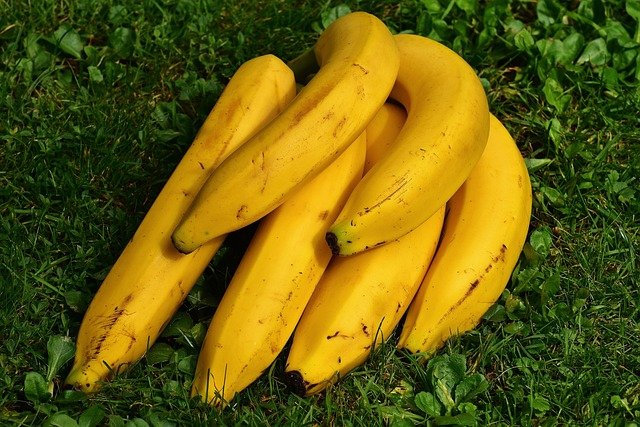“Bananas rank as one of the world’s most beloved fruits, and their popularity is well-deserved. These tropical wonders are packed with essential vitamins, healthy carbohydrates, generous amounts of potassium, iron, and fiber, while being low in sodium. They make for a convenient, energy-boosting snack that’s delicious, portable, and exceptionally nutritious. Bananas are grown in many countries, especially in tropical regions, and are exported to America and Europe. While they originated in Asia, they now flourish in various parts of the world, including South America, Australia, Latin America, and Africa.
How are Bananas Cultivated?
Bananas thrive in regions with consistent temperature and humidity levels, primarily found in tropical areas rather than the cooler climates of North America and Central Europe. The optimal temperature range for banana growth is between 55 and 100 degrees Fahrenheit. Exposing the plant to lower temperatures can result in frost damage. Protection from cold winds is also crucial to prevent fruit breakage and loss.
Contrary to common belief, bananas do not grow on trees but on plants that can reach heights of 15 to 30 feet, often resembling trees. These plants require a humid environment with ample rainfall to flourish. Bananas are not grown from seeds but from ‘rhizomes,’ which are removed from the parent plant and replanted in well-drained soil to yield new plants.
After planting, it takes about 11 to 15 months for a new banana plant to produce fruit, although this timeline can vary depending on the banana variety and weather conditions. Bananas belong to the ‘Musaceae’ family, which includes plants like orchids, palms, and a few grasses.
Notably, you can even grow bananas in containers, especially dwarf varieties, which can be tailored to fit indoor spaces. For those residing in warmer climates, cultivating bananas in your own garden is a viable option. Dwarf banana varieties also come in flavors like lemon, apples, and vanilla, adding a delightful twist to your homegrown fruit.
Countries That Grow Bananas:
Now that we’ve covered the climatic and soil requirements for banana cultivation, let’s explore where bananas are grown. The top banana-producing countries include India, Indonesia, the Philippines, Thailand, Africa, Brazil, Costa Rica, Colombia, and Panama. Bananas are cultivated in over 100 tropical countries, although not all of them export their banana harvests. Major banana importers include North America, Europe, and Japan.
Asia is the birthplace of bananas, with India leading in banana production, although they primarily consume their entire crop domestically. China, Indonesia, the Philippines, and Thailand are also prominent banana producers that export their fruit.
The top banana-exporting countries globally are the Philippines, Costa Rica, Ecuador, and Colombia. Together, they account for 75% of the bananas consumed worldwide, with Ecuador being the largest exporter, shipping out 33% of the international banana market.
In South and Latin America, the leading banana producers and exporters are Colombia, Costa Rica, Ecuador, Brazil, and Mexico. Smaller quantities are grown in Honduras, Panama, and Guatemala.
Africa contributes a smaller share to global banana production, with major exporting regions being Cote d’Ivoire, Cameroon, and Burundi.
Here’s a snapshot of the top banana-producing nations, based on a 2007 statistical analysis:
– India: 21.77 million metric tons
– Philippines: 7.48 million metric tons
– China: 8.04 million metric tons
– Ecuador: 6.00 million metric tons
– Brazil: 7.10 million metric tons
– Indonesia: 5.46 million metric tons
– Thailand: 2.00 million metric tons
– Costa Rica: 2.08 million metric tons
– Mexico: 1.96 million metric tons
Varieties of Bananas and Their Uses:
The bananas found in grocery stores typically fall into two main categories: the familiar fruit banana and plantains. While fruit bananas are well-known worldwide, plantains are primarily used in tropical regions, where they’re used in various cooked dishes, including vegetables and gravies. Plantains are starchier and drier than fruit bananas, making them ideal for cooking but unsuitable for consumption in their raw form.
Bananas are celebrated for their health benefits. They can help lower blood pressure, aid in digestion, combat anemia, alleviate depression, and support weight loss. Additionally, bananas are known for their positive effects on gastrointestinal health and cognitive function. However, it’s not just the fruit that’s valuable; every part of the banana plant is used in numerous ways, making it an incredibly versatile crop for farmers.
– Banana leaves are used for wrapping and roasting food.
– Banana flowers are edible and feature in various recipes and home remedies for conditions like bronchitis, ulcers, and diabetes.
– The inner trunk of the banana plant is cooked and consumed in many regions around the world.
– Banana roots are utilized in Ayurvedic medicines for treating dysentery and propagating new plants.
– Even banana plant fibers are woven into cloth and used in paper production.
Have you ever encountered another plant with such multifaceted utility, where every part finds purpose in diverse applications?”
